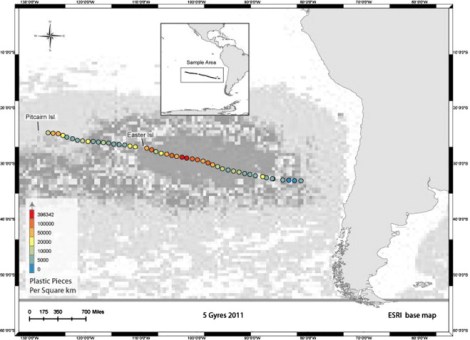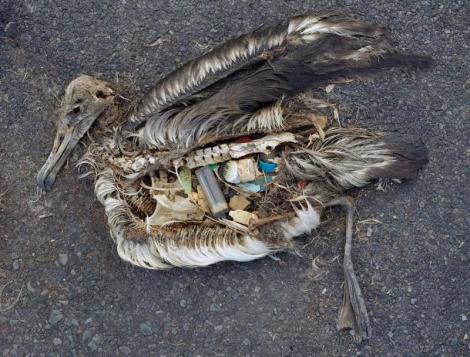The Great Pacific Garbage Patch and North Atlantic Garbage Patch have some new competition from the south, where scientists have discovered evidence of a new floating garbage island off the coast of Chile.

Scientists at the 5 Gyres Institute — which tracks plastic pollution in all five swirling subtropical gyres — discovered this mass of plastic by looking at ocean currents. This patch has accumulated in the South Pacific subtropical gyre, right around Easter Island. It’s the first documentation of a trash patch in the Southern Hemisphere.
This video shows the projected spread of plastic pollution over the next 10 years:
“To create a solution to an ecosystem-wide problem we must understand the scope and magnitude of that problem,” said 5 Gyres Executive Director Marcus Eriksen. “It’s our mission to be on the frontlines of that understanding, and to continue monitoring the most remote regions of the world’s oceans.”
As we find out just how far our plastics have traveled, we’re also finding out just how much damage they’re doing. A new study shows that the most commonly produced plastics are also the ones that soak up the most other toxins when they’re floating around in our oceans for, well, ever — at least until they get gobbled up.
This year the 5 Gyres Institute will launch expeditions to the North Atlantic, Indian Ocean, and Great Lakes, on the hunt for more garbage patches.





